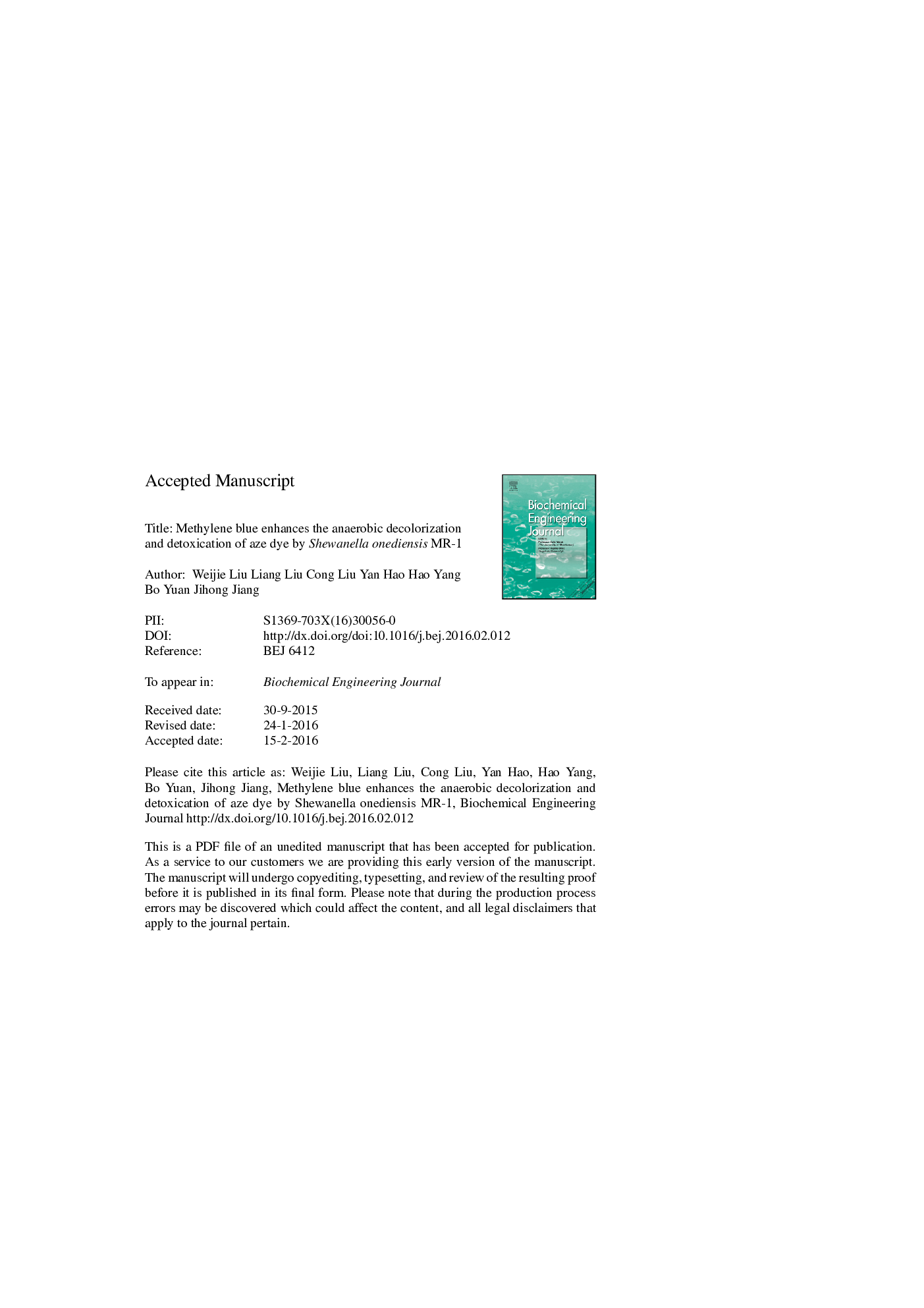| Article ID | Journal | Published Year | Pages | File Type |
|---|---|---|---|---|
| 6483947 | Biochemical Engineering Journal | 2016 | 32 Pages |
Abstract
Azo dyes are recalcitrant pollutants that constitute a significant burden to the environment. This study focused on decoloring azo dye Congo red using Shewanella oneidensis MR-1 and exploring methylene blue as electron shuttle to enhance its decolorization and detoxication efficiency. The effects of physicochemical parameters on anaerobic decolorization were investigated. The results showed that the suitable pH, temperature and NaCl concentration range for decolorization were 6.0-8.5, 28-40 °C and 0-20 g/L, respectively. Under the optimal conditions, 99.25% decolorization of up to 2 g/L Congo red was achieved within 24 h. Nitrite, nitrate and oxygen could significantly inhibit the decolorization. Riboflavin and methylene blue were found to be able to significantly accelerate decolorization capacity of S. oneidensis MR-1, however, block of Mtr respiratory pathway depressed the promotion effects of riboflavin and methylene blue, suggesting that the promotion effect was achieved by accelerating electron transfer between cells and dyes. Furthermore, the phytotoxicity analysis revealed that the toxicity of Congo red to Triticum aestivum, Pogostemon cablin and Isatis indigotica Fort was decreased during the decolorization process.
Keywords
Related Topics
Physical Sciences and Engineering
Chemical Engineering
Bioengineering
Authors
Weijie Liu, Liang Liu, Cong Liu, Yan Hao, Hao Yang, Bo Yuan, Jihong Jiang,
